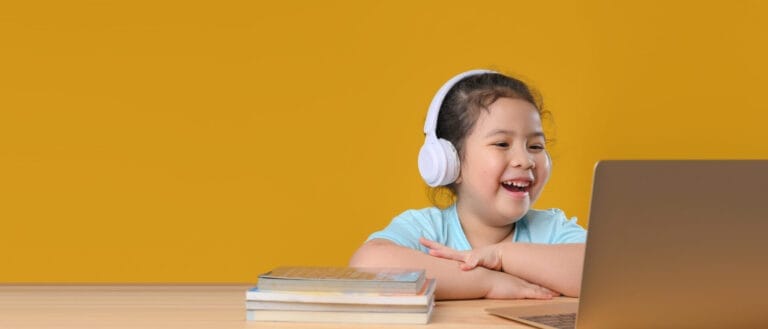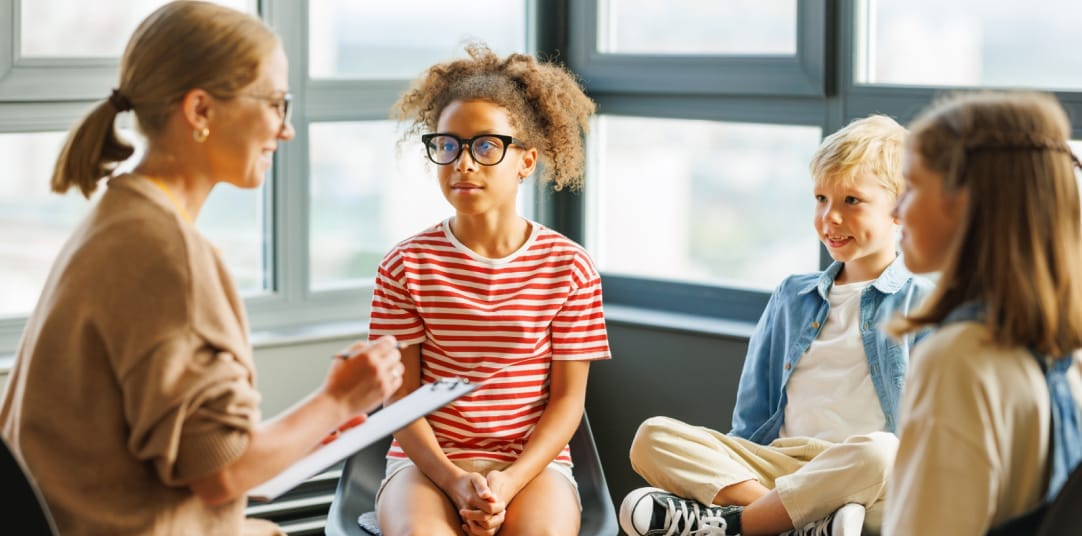
The Impact May Vary
The entire notion of social distancing has become quite a daunting challenge for all of us. This is perhaps especially so for parents who have now become the primary outlet for their children’s social interaction.
And as we are looking at the possibility of maintaining social distancing for an extended period due to COVID-19, parents, teachers, those who deliver online speech therapy, and other clinicians are probably wondering how this “prolonged recess” from other children could affect the long-term social development of the children in their care.
Amy Learmonth, Ph.D., is a developmental psychologist who has studied children as young as eight weeks old, looking at how they think and how their abilities change over time. She runs the Cognition, Memory, and Development Lab at William Paterson University of New Jersey and is also president of the Eastern Psychological Association.
“Social development has important impacts at all ages, but for social distancing, the kids who are likely to suffer the most are in late childhood and adolescence,” Learmonth told Healthline.
According to Learmonth, while early childhood social development can occur exclusively in the family, as children grow and develop, as they become more socially adept, friends become the epicenter of their social development.
“Young children are learning the basics of being social beings, and their parents and siblings can provide most of the input they need, while older children and adolescents are learning to navigate complex social groups of peers,” Learmonth said.
Healthy Social Development During These Years
To appreciate how social distancing is impacting children’s social development, one must first understand what is healthy and normal. “In late childhood and adolescence, children start to strike out on their own,” Learmonth explained. “Friendships become more complex and more about shared interests. This is where children try out the things that will make their adult friendships work, or not.”
Learmonth explained that those relationship skills include learning how to find and provide support to their friends as well as developing the skills to build trust, deal with betrayal, and learn to trust again. This is also when children begin to figure out which relationships will find deeper roots than those that are limited to sharing experiences.
“They do this by experimenting,” Learmonth said. “They are in the process of figuring out who they are and what they want from their friends. This is why those friendships in middle school particularly can be fragile, and most kids experience some isolation and heartbreak.”
Although friendships developed during these years can be challenging to navigate, they will be critical stepping stones to the development of healthy relationships later on in adult life. The problem is that such friendships are difficult to develop while maintaining a distance of six feet, or over a computer screen or smartphone.
How short-term social distancing could affect social development
Most experts agree that if social distancing is short-term, a matter of months, children will prove resilient. “This generation of teenagers has been virtually socializing with their friends their whole lives,” said developmental psychologist and family coach Cameron Caswell, Ph.D. “They are used to connecting through their devices and online, so that part of social distancing will likely be easier on them than the rest of us.”
Caswell points out that there is an abundant number of teens who have found creative ways to adapt to the new rules—hosting FaceTime sleepovers, long video chats, watching movies as a group through Netflix Party, and gathering virtually on social networks like Houseparty.
“Other than having to deal with boredom (which is a good thing) and missing out on some major life milestones like field trips, prom, and graduation, I don’t believe three months of social distancing will have a negative impact on this age group,” Caswell said. This could be the perfect opportunity for families to reconnect and bond in ways that, without the lockdown, would have been impossible.
What’s important is that parents realize that the virtual world we live in cannot replace “normal” human interactions. At the same time, necessity is the mother of invention. Parents, teachers, those who deliver online speech therapy, and other clinicians should think “outside the box” in devising ways to utilize the resources available to replicate healthy social interactions to the degree possible during the pandemic.
Help Your Students Cope with the Crisis
The response to the COVID-19 Pandemic is unprecedented. Because of our unique role in children’s K-12 education including online speech therapy, we feel a responsibility to do what we can to assist schools, therapists, and students with this transition to online learning and seclusion. To ensure that our students remain engaged and supported, our therapists are providing complimentary “Support Sessions” to the country’s youth. We are also assisting schools by training their therapists for remote therapy.




